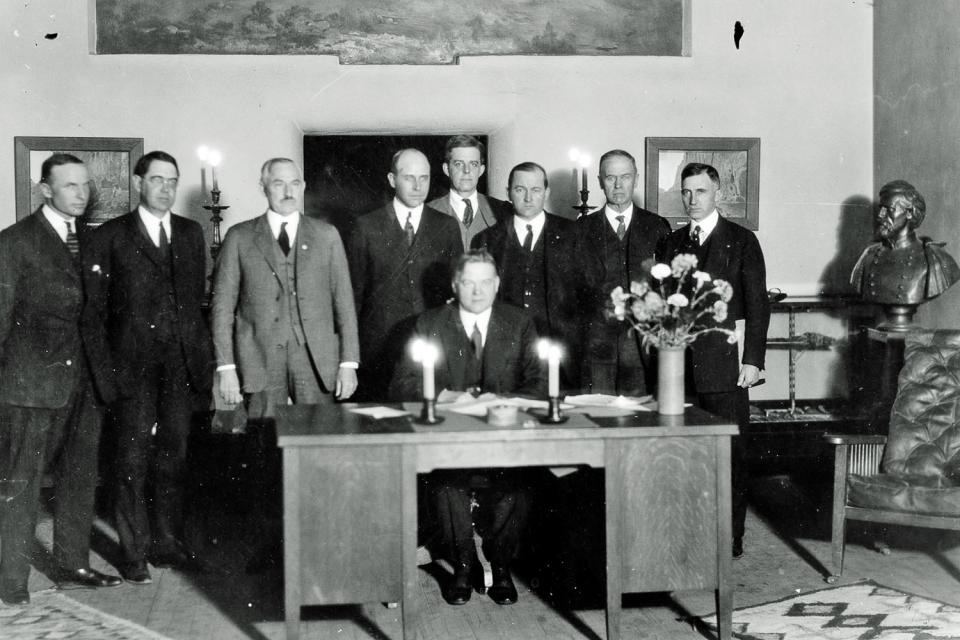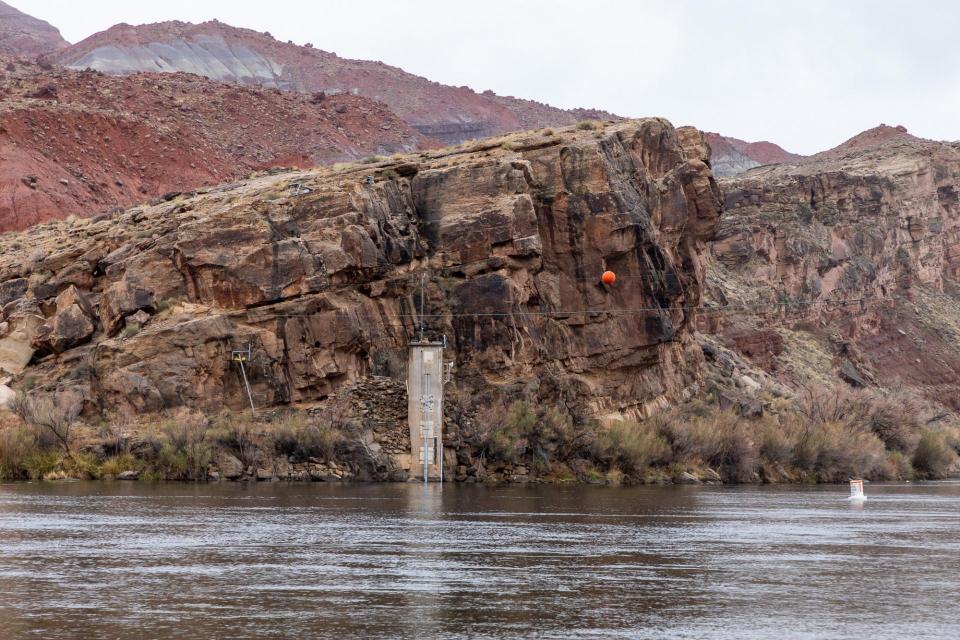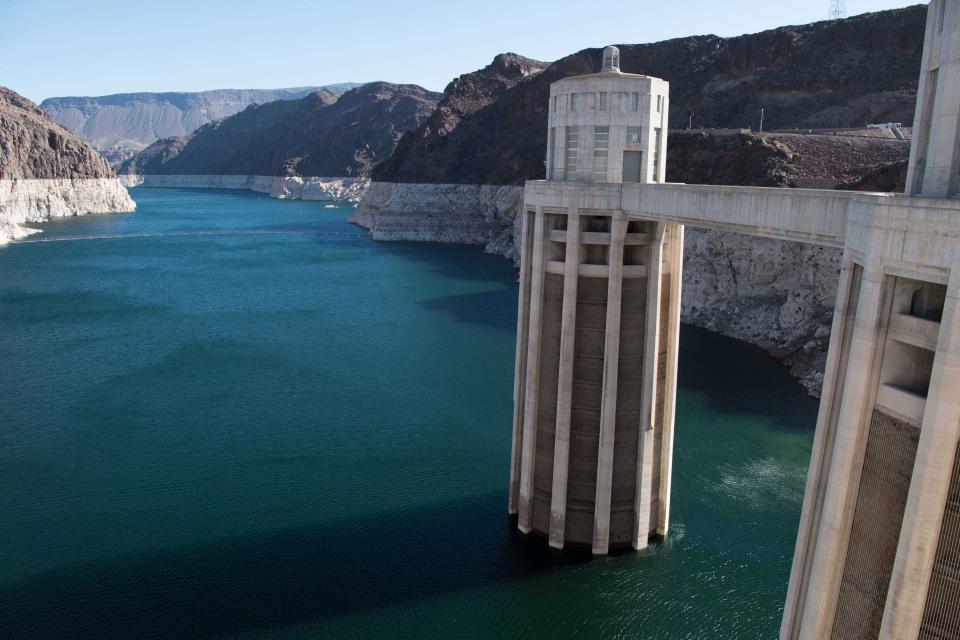Colorado River Compact
 The Colorado River Compact of 1922
marked the first time in U.S. history that more than three states
negotiated an agreement among themselves to apportion the waters
of a stream or river.
The Colorado River Compact of 1922
marked the first time in U.S. history that more than three states
negotiated an agreement among themselves to apportion the waters
of a stream or river.
The compact is the cornerstone of the “Law of the River” – a complex set of interstate compacts, federal laws, court decisions and decrees, contracts and federal actions that regulate use of the Colorado River.
The Colorado River Compact divided the Colorado River Basin in two, apportioned the annual flow between the upper and lower basins and provided a framework for management of the river for years to come.
Context of Compact
Before the compact, the seven Basin states – Colorado, Utah, New Mexico, Wyoming, Arizona, Nevada and California – were anxious about securing their share of the Colorado River but could not agree on how to allocate the river among themselves.
States in the upper watershed grew alarmed as proposals for building the Boulder Dam (later renamed after President Hoover) and All-American Canal gained congressional support at the urging of California, a state that contributed the least amount of runoff to the Colorado River. They wanted to protect their interests if the projects were to be built.
Those concerns intensified in June 1922 when the U.S. Supreme Court ruled that the water rights doctrine of prior appropriation – whoever used the water first has first claim to its use in times of shortage – applied regardless of state lines.
The states negotiated an interstate compact under the direction of then-Commerce Secretary Herbert Hoover. Despite enormous controversy, delegates from the seven states reached a monumental agreement signed Nov. 24, 1922 at the Palace of the Governors in Santa Fe.
What the Compact Does
The compact guarantees each basin the right to beneficially use 7.5 million acre-feet of water a year from the Colorado River system in perpetuity. This approach allowed water projects to proceed in the Lower Basin states of Arizona, Nevada and California and reserved water for future dams and reservoirs in the Upper Basin states of Colorado, Utah, New Mexico and Wyoming.
 To uphold the agreement, the compact
stipulates that the Upper Basin states must not deplete the
Colorado’s flow to downstream states below an aggregate of 75
million acre-feet for any 10 consecutive years. The flow is
measured in northern Arizona at Lee Ferry, a point on the
Colorado River where it crosses into the lower watershed.
To uphold the agreement, the compact
stipulates that the Upper Basin states must not deplete the
Colorado’s flow to downstream states below an aggregate of 75
million acre-feet for any 10 consecutive years. The flow is
measured in northern Arizona at Lee Ferry, a point on the
Colorado River where it crosses into the lower watershed.
The compact allows the Lower Basin states to consume an additional 1 million acre-feet a year during certain conditions. Also, both basins must share the U.S. commitment to deliver water to Mexico. (A 1944 treaty set the delivery amount at 1.5 million acre-feet a year.)
The agreement grandfathered irrigated water rights already in place on Colorado’s Western Slope and addressed Native American water rights in a single sentence: “Nothing in this compact shall be construed as affecting the obligations of the United States of America to Indian tribes.”
Arizona was the lone holdout in ratifying the compact (until 1944), arguing the water should be allocated to each state rather than divided between the two basins. The agreement nonetheless took effect through the 1928 Boulder Canyon Project Act.
The law also quantified annual allocations to the individual Lower Basin states and authorized the construction of Hoover Dam and the All-American Canal. River water was apportioned among the Upper Basin states by percentage in 1948 under the Upper Colorado River Basin Compact.
The Future
The compact was crafted assuming an average of 18 million acre-feet of water would be available to split each year. Over time, that figure has proved to be an overestimation of the river’s actual flows.
It has become increasingly more difficult for the Upper Basin states to develop their own supply and meet their downstream obligations under the compact based on miscalculated flows.
The Colorado River Compact and other hallmark water-sharing arrangements have enabled cities and farms to thrive in the desert, but they are being increasingly challenged by the Southwest’s transition to a hotter and drier climate, a process known as aridification.
Aridification and a series of binational agreements, tribal water rights settlements and operational changes for the environment have all challenged notions of how much Colorado River water is reliably available for urban growth and agriculture.
Updated March 2024










